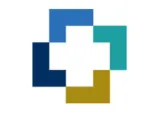Create Mentoring Programs Employees Love
Together Software is a mentorship platform that empowers your organization to drive performance through relationships.
Organizations Partnering with Together to Deliver Mentoring







.png)









.png)









.png)


Mentoring
Foster professional growth and learning by matching individuals with experienced mentors in your company.
Read more about Mentoring

Colleague Connect
Offer more informal, peer-to-peer connections, encouraging spontaneous interactions and knowledge sharing among colleagues
Read more about Colleague Connect

The all-in-one mentorship platform
Registration
Invite employees to register with tailored emails, build robust mentorship profiles with custom questionnaires and your HRIS Data.
Matching
Together’s pairing algorithm creates relevant mentor-matches at scale. Mentors and mentees are matched based on their goals, skills, and much more.
Development
Together flags matches that aren’t meeting or have lower session scores. Quickly resolve a mis-match or check-in with pairs to see where they need support.
Measurement
End-to-end measurement of your program’s Impact. Together generates reports on signups, participation, goal completions, session feedback, and more.
Direct a mentorship symphony from your laptop
Best practices, built in for you
Together has customizable templates for all major mentoring formats. Every time you create a program, you’re already following best practices.
Make the perfect match
98% of employees who use Together are satisfied with their mentor match. Determine and weigh your matching criteria to make the perfect match.
Easily measure your program’s impact
Together’s reporting dashboards give you insights across the entire mentoring journey. Create custom surveys to get specific insights and feedback.
Enable great connections
Together provides session agendas so Mentors and Mentees have impactful conversations. Easily customize agendas with your content.
World-class program support
Together's support team helps run global mentoring programs at top companies. Whether you're looking to start or scale mentorship you’ll benefit from our experience.
Boost session attendance
Connect directly with any calendar provider and book sessions directly on the platform. No more back-and-forth or switching apps for employees.
Enriched with your data
Connect your HRIS system to easily segment programs, invite employees, enrich mentor profiles, and gain more insight.
Your data, secured
Together is SOC 2 certified and supports SAML & SSO. Feel confident scaling your mentoring program with as many employees as you need.






















.png)




%201.png)
















.png)
.png)




